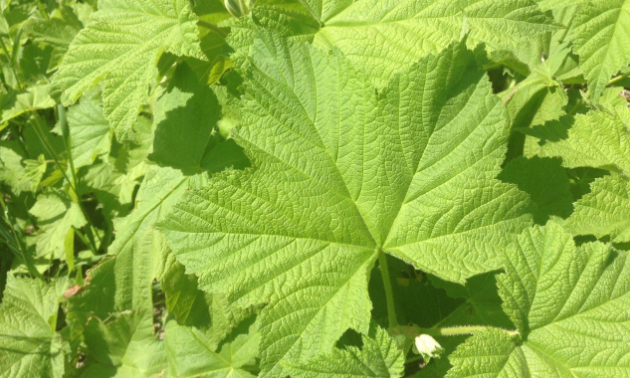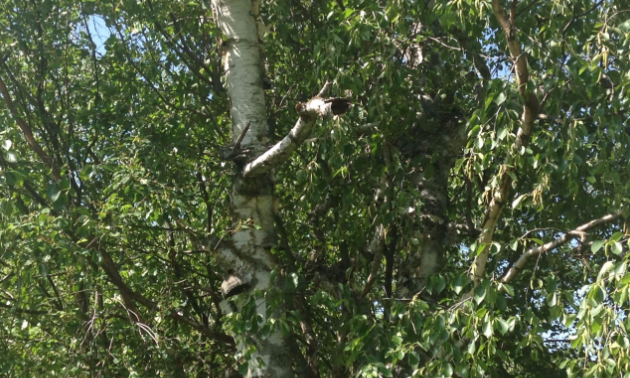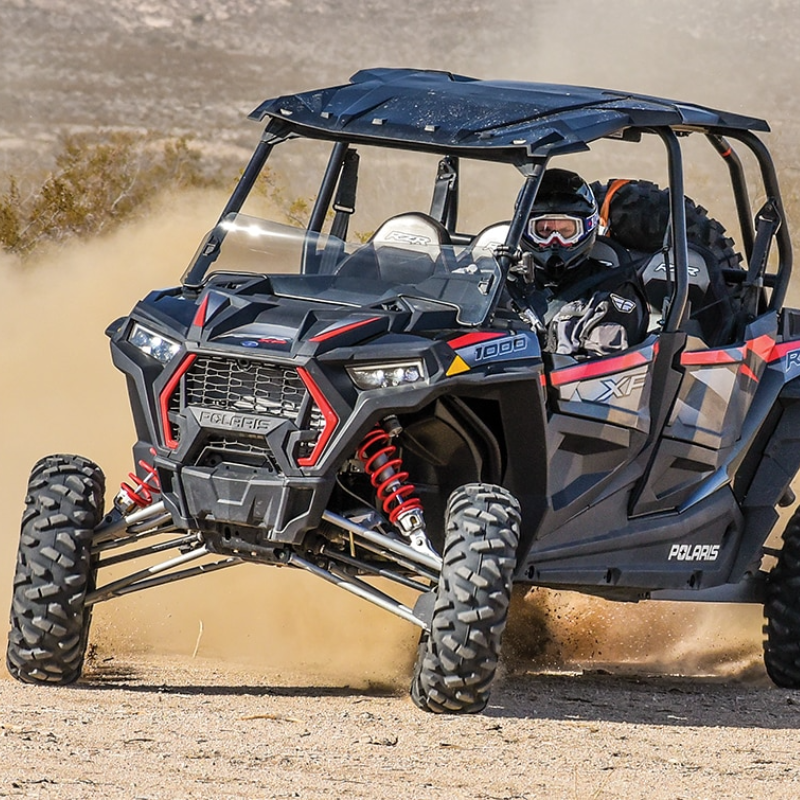Exploring the great outdoors is one of the most rewarding and relaxing activities for many powersports enthusiasts. You simply never know what to expect with an abundance of surprises around each corner.
Here are some need-to-know tips and facts to make your outdoor adventure even better.
Emergency equipment
No TP, no problem. One of nature‘s greatest gifts comes in the form of soft and pillowy leaves that can double for toilet paper. No joke! One of our family’s favourites would most definitely be thimbleberry leaves. The plant’s large, broad leaves and velvet-like texture rival the most expensive commercial three-ply toilet paper sold in stores. Other favourites would be mullein leaves, which are also soft and plush, and clean dry moss.

Thimbleberry leaves are a plush choice when nature calls in the backcountry. — Trish Drinkle photo
Lighting a fire is a breeze if you know what you are doing. Old man‘s beard, the red needles from dying pine and spruce trees, and birch bark are great fire starters. Have ample kindling available to get a solid foundation of fire in your pit. Collect about four times the kindling you figure you’ll need to ensure success. Cedar wood burns fast and hot and makes great kindling, but will burn hot and quick so is not great for a long-burning fire. For a longer burn choose wood such as larch and fir. Pine is another quick burner but is not consumed by flame nearly as fast as cedar wood, making it a pretty solid wood choice.
Tampons are an incredibly useful survival tool. No, this is not a joke. Should you become stranded in the backcountry with your ATV, dirt bike or snowmobile you can dip the tampon in your gas tank to create an epic fire starter. Even without gas as a catalyst, the cotton from the tampon will light and create a predictable fire-starting source to ignite your kindling. The plastic on a plastic tampon applicator can also act as a wonderful fishing bobber should you be hungry and craving fish while stranded. You can also stuff the cotton from the tampon into a straw and use it to filter out sediment from water sources. The list is actually endless—from creating blow darts to wound packing, tampons truly are a valuable backcountry resource.
Shaggy manes
The crisp cool air of early autumn sees the awakening of the shaggy mane mushroom. Shaggy manes are one of the most common and easily identifiable mushrooms in Western Canada, making them a favourite among pickers. A mild yet flavourful variety of mushroom, shaggy manes can help you create a masterpiece meal from the mundane. But there are some things to consider before digging into a meal containing shaggy manes. Because they are from the Inky Cap family you must eat them as soon as possible—within 24 hours is recommended—or they will start to ink out, making them inedible. Alcohol and shaggy manes do not mix. Taken together, the two can cause nausea, dizziness, lightheadedness, and a blotchy redness to the face.
Dreaming of a steak and mushroom meal with your favourite fresh vino? Stay away from the Inky Cap family of mushrooms to be on the safe side.
Fishing
Headed to the backcountry for some remote fishing? If you are planning on eating your catch here are some tips to keep in mind when dealing with fish with parasites and worms. Generally speaking, if cooked to an internal temperature of 70 C, these parasites and worms most likely won’t hurt you.
Personally I absolutely cannot stomach the thought of eating a tasty cutthroat with a side of parasite, so I bow out of the eating-wormy-fish scenario. Many fisherpeople like myself will try to avoid the scenario altogether, looking for signs of infestation in the fish they catch. Some will have noticeable clues such as black spots, lice, larvae or worms on the fish‘s exterior. They are generally not as firm to touch as a healthy fish, with quite a mushy feel, and will act sluggish. Stressful situations can bring an explosion of parasitic activity in fish such as warmer water temperatures, lowered oxygen content in the water, an abundance of organic matter introduced to the water source and population explosions of parasite-sharing birds such as loons and blue herons. Be it a trout, northern pike, bass or perch they all have the potential for being wormy from time to time. On a side note, the colder the water, the better tasting and firm the fish will be.
Wild animals
Wild animal encounters can be the holy grail of a backcountry experience for many people. It is a great experience unless you happen to encounter one of nature‘s predators such as a bear or cougar.
- Tip 1: Do not run. Food runs.
- Tip 2: Outdated myths will not protect you. Cougars won’t be waiting in a tree to drop on you—they will stalk and pounce. As for bears, they can run downhill so if that was your safety plan, it’s time to develop a new one. Stand your ground and look big and for heaven‘s sake, do not scream. Again, food screams and may also heighten the predatory response of these meat-eating creatures.
- Tip 3: Bear spray works on all types of animal attacks and is exponentially more effective than a gun in a wildlife attack.
For more details regarding wildlife encounters, visit www.wildsafebc.com where you will find information regarding bear, cougar and wolf encounters.
As with any backcountry adventure, preparation is essential. A well-stocked first aid kit, food rations, a communication device and a good set of tools are recommended to ensure your safety and enjoyment in the beautiful outdoors.








Comments